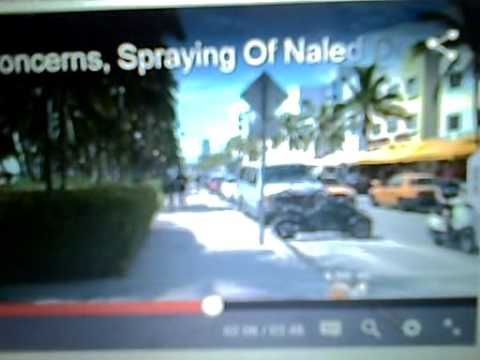There are two main weapons in the war on mosquitos and the diseases they can carry such as malaria, dengue, West Nile virus, chikungunya, yellow fever, filariasis, Japanese encephalitis, Saint Louis encephalitis, Western equine encephalitis, Eastern equine encephalitis, Venezuelan equine encephalitis, La Crosse encephalitis and Zika fever.
These weapons are Bti spray – a fungus that prevents larval mosquitos from processing food and thriving; and naled – an organophosphate that kills on contact that’s been registered for use in the U.S. since 1959 and is sold under the brand name Dibrom.
There is some consternation in areas where the naled pesticide has been sprayed as some studies suggest it might cause damage to humans, particularly those in utero.
The EPA says of Bti: Bti is a biological or a naturally occurring bacterium found in soils. (Bti is short for Bacillus thuringiensis subspecies israelensis.) It contains spores that produce toxins that specifically target and only affect the larvae of the mosquito, blackfly and fungus gnat. EPA has registered five different strains of Bti found in 48 pesticide products that are approved for use in residential, commercial and agricultural settings primarily for control of mosquito larvae. Bti is approved for aerial spraying, which has taken place in Massachusetts, Pennsylvania, Maryland and Michigan, among other states. Bti can be sprayed over waterbodies such as ponds, lakes, rivers and streams. Bti is used to kill developing mosquito larvae by being applied to standing water where those larvae are found. Bti can be used around homes in areas and containers where water can collect, such as flower pots, tires, and bird baths. Bti can also be used to treat larger bodies of water like ponds, lakes and irrigation ditches.
The EPA allows Naled: It says that “when applied according to label instructions, naled can be used for public health mosquito control programs without posing risks to people. People aren’t likely to breathe or touch anything that has enough insecticide on it to harm them. Direct exposure to naled during or immediately after application should not occur. However, anyone who has a particular concern because of an existing health problem should talk to their doctor. Also, those who tend to be sensitive to chemicals in general, including household chemicals, could experience short-term effects such as skin, eye and nose irritation.”
There are dissenting voices, however. Some children in China, studied by the University of Michigan, have symptoms that suggest the Naled spray can cause birth defects – the very thing authorities are trying to prevent when killing mosquitos infected with the Zika virus.
The study, whose authors say it is the first to examine real-world exposure to naled outside workplace accidents or lab experiments, used cord blood from 237 mothers who gave birth to healthy babies at a hospital in southeast China between 2008 and 2011. At six weeks, the babies displayed no problems. But at nine months, the babies suffered from slight problems with coordination, movement and other motor functions.

